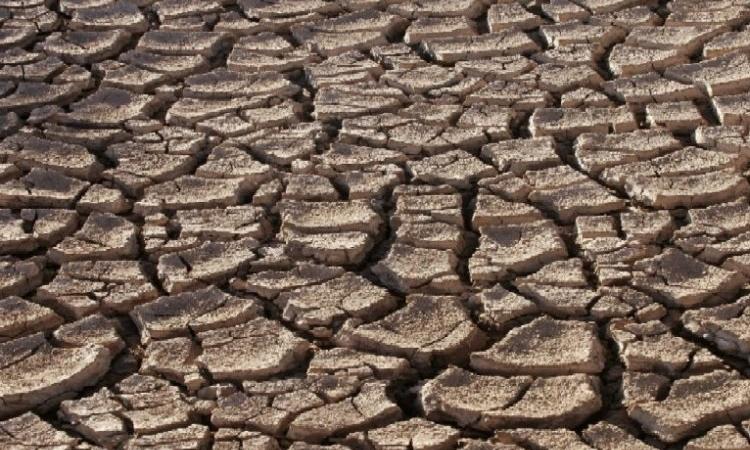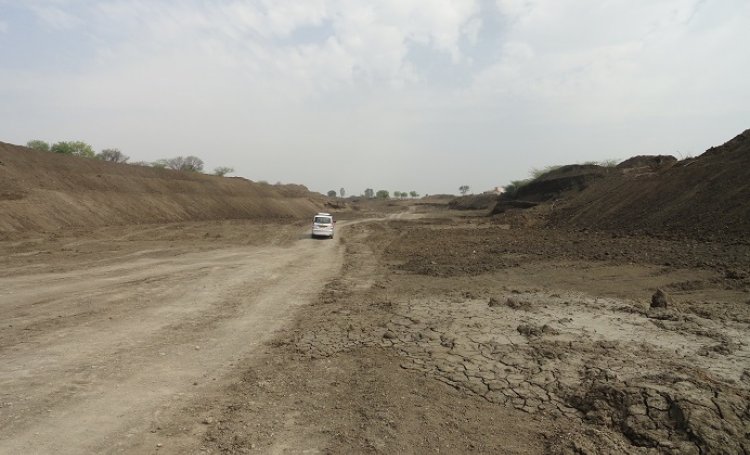
Maharashtra is reeling under drought this year too, with the situation in Marathwada particularly bad. As high as twenty four out of thirty six districts in the state are facing deficient monsoons and about 4,920 villages and 10,506 hamlets are now completely dependent on water tankers for drinking water. And this, despite the intensive implementation of the Jalyukt Shivar Abhiyan (JSA), launched back in 2015 to help Maharashtra cope with severe droughts that have seriously affected the livelihoods of farmers in the state.
To date, Rs. 7,692 crore have been spent and 2,54,000 water and soil conservation projects have been implemented in 16,522 villages in the state under the Jalyukt Shivar Abhiyan, a scheme that claims to have created 24,000 million cubic feet of water storage.
JSA works have been implemented through Corporate Social Responsibility (CSR) funds involving non-pro?t organisations, and through initiatives such as Paani Foundation's Water Cup that creates mass awareness about drought mitigation and calls for hands on participation from the people.
Why then, does Maharashtra still continue to suffer from drought despite the the JSA? Why has the JSA been unable to find a sustainable solution to droughts in the state? A research paper titled ‘Can Jalayukt Shivar Abhiyan prevent drought in Maharashtra?’ published in Economic and Political Weekly (EPW) dwells on these questions and explores the factors responsible for the poor performance of JSA.
The paper makes these interesting observations:
Confusion over the use and purpose of the JSA prevails
 There has been too much emphasis in the JSA on deepening and widening of rivers and streams to create structures for water storage, while other holistic aspects included in the JSA such as upper catchment works from where the stream originates, bank stabilisation (protection of the stream banks and restoring ecology such as trees around it), repairs, desilting and cleaning of tanks have not been given enough importance while implementing the scheme.
There has been too much emphasis in the JSA on deepening and widening of rivers and streams to create structures for water storage, while other holistic aspects included in the JSA such as upper catchment works from where the stream originates, bank stabilisation (protection of the stream banks and restoring ecology such as trees around it), repairs, desilting and cleaning of tanks have not been given enough importance while implementing the scheme.
While the Joseph Committee report (the High Court had directed the state government to form a committee to evaluate the claims made on the success of the Jalayukt Shivar Abhiyan. Thus, a committee was formed, chaired by former secretary of state Johny Jose and eight other experts, to study the report. According to the committee, "The JSA was proposed as an immediate measure to address the recurrent problem of water scarcity and crop failures arising due to low rainfall". Farmers and even government officials believe that a normal monsoon is critical to the success of the JSA, because the usefulness of the constructed structures can only be seen during periods of good rainfall.
The constructed structures are not perceived as recharge structures, but more as storage structures to hold water when it rains heavily. The paper argues that the JSY then is not, in reality, a "strategy to drought proof Maharashtra" because the structures will not be able to provide water during periods of scanty rainfall.
Poor planning and implementation of projects hinders progress
An important step in the implementation of work under the JSA is the preparation of a Detailed Project Report (DPR) for the village, which includes a water budget and treatment maps that need to be approved by the Gram Sabha. However, DPRs are often neither available at the Gram Panchayat of?ce nor at the government of?ces. Most of the people in the villages where the JSA is implemented, continue to be unaware about the process of implementation and the progress achieved, if any.
Work done under the JSA continues to be of questionable quality at most of the sites and includes poor quality of construction.
For example, Cement Nala Bunds (CNBs) constructed under the scheme continue to leak and have loose foundations. The main body of these CNBs are either corroding badly or broken in some cases, exposing the rebars. Most of the flank walls near the banks erode due to poor design of the ?ank and wing walls. There are no institutional mechanisms in place for the repair and maintenance of these structures, nor does the community have any role to play in the construction, which is entirely done by contractors.
In fact, many of the works under the JSA have been done using machines, replacing manual labour and thus restricting participation from local communities. This in turn, has created a situation where there is less work available in villages under the Mahatma Gandhi National Rural Employment Guarantee Act (MGNREGA).
Good practices developed under watershed management in the state also continue to be absent in the design and implementation of JSA.
No planning for water-scarce years
The focus of JSA has mainly been on supply side solutions, while demand management measures are non-existent in the current drought mitigation measures undertaken. Demand management measures include participatory water management, crop planning, understanding the science of hydrology before planning, regulating water use, ensuring equitable access to water and introducing better agronomical practices.
Thus, during periods of good rainfall, most of the water is used up to increase agricultural yields. As a result, negligible water is left in the aquifers, which exacerbates ensuing drought years. Sustainable solutions are known – for instance, improving soil moisture which is of great help during dry period. Yet, little attention is paid to such tried and tested solutions.
It has become quite apparent that the JSA has not incorporated learnings from past mistakes, nor has it taken into account long term solutions that have shown impact on the ground. This lack of planning reflects in the continued emphasis on growing sugarcane – a water-intensive cash crop - in this perpetually drought prone region. While the Government of Maharashtra has mandated the use of drip irrigation for sugarcane cultivation, it does not help much as the saved water is again used to bring more area under sugarcane cultivation.
While farmers in the state continue to depend on bore wells and dig deeper in search of water to desperately cope with the ongoing drought, there are no institutional mechanisms in place to regulate water use and decide upon norms for water extraction and use.
A poor understanding of the principles of hydrology, the water cycle and water balance has further led to the mismanagement of water at the watershed and sub-basin/basin scale. This has, in turn led to an emphasis on overdesigning and creating more water harvesting structures to store water without considering the impact of these storage structures on other larger reservoirs. A thorough water balance assessment at the sub-basin and watershed scales to manage external and local water use optimally and in an integrated manner, is conspicuously absent.
Quick fix solutions for drought management will not work
The paper argues that rain is crucial for agriculture and decentralised solutions for water security are very important, but they alone cannot solve the issues of water security unless they are supplemented with regulation of water use. Long term solutions such as participatory planning, implementation, monitoring and regulation of water use need to be incorporated.
In their absence, spending huge amounts of money on programmes like the Jalyukt Shivar Abhiyan will not help in mitigating drought in Maharashtra. The JSA aptly demonstrates that there can be no quick-?x solutions to droughts!
Please view a detailed response to this article published in the Economic and Political Weekly by Eshwar Kale, Ganesh Rajapure, Abhijeet Kavthekar, Janardan Pawar here
A copy of the paper can be downloaded below.